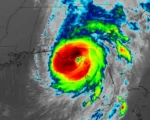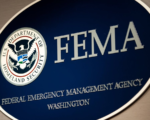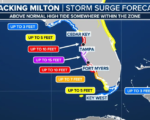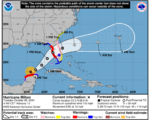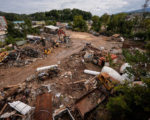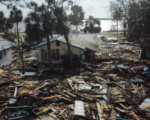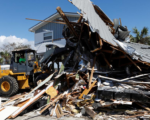Florida Prepares for Massive Evacuation as Hurricane Milton Approaches, Still Recovering from Helene
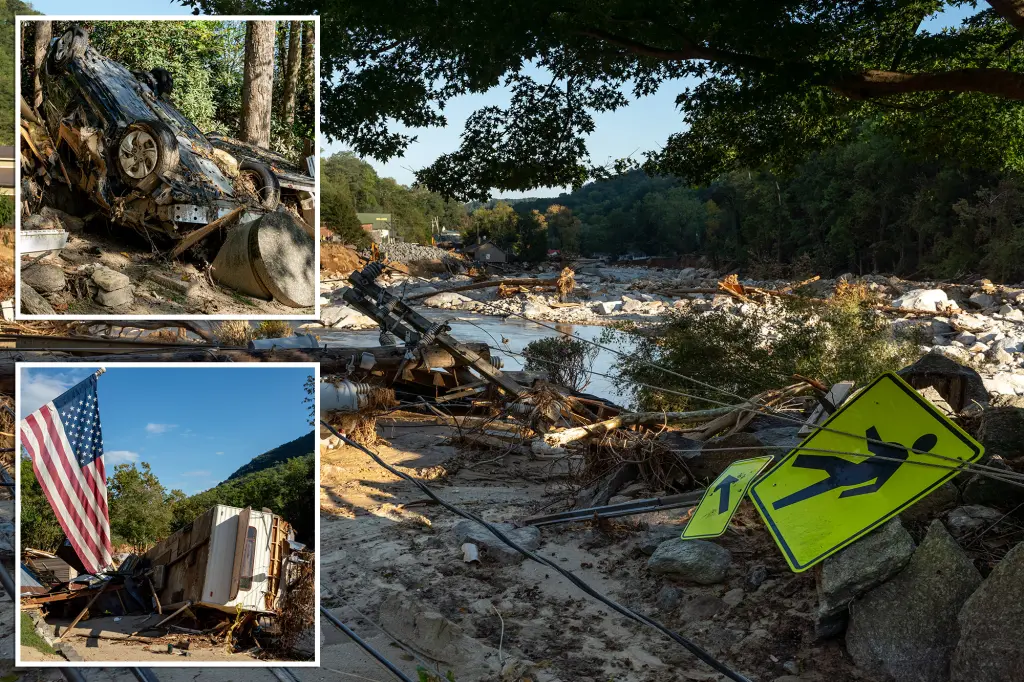
Florida is bracing for its largest evacuation since 2017 as Hurricane Milton gathers strength in the Gulf of Mexico, threatening to make landfall on Wednesday along the state’s western coast. This comes on the heels of Hurricane Helene, which caused widespread devastation in northern Florida just days earlier.
Hurricane Milton intensified from a tropical storm to a Category 1 hurricane on Sunday and is projected to strike near the heavily populated Tampa Bay area as a major hurricane. According to the U.S. National Hurricane Center (NHC), Milton could escalate into a Category 4 storm, potentially causing widespread flooding and destruction.
As of Sunday evening, the hurricane was located about 780 miles west-southwest of Tampa, moving toward Florida at 7 mph (11 kph), with maximum sustained winds of 85 mph (140 km/h). A hurricane watch has also been issued for parts of Mexico’s Yucatan Peninsula.
Largest Evacuation Since Hurricane Irma
Kevin Guthrie, the director of Florida’s emergency management division, urged residents to prepare for what could be the largest evacuation since Hurricane Irma in 2017. “I highly encourage you to evacuate,” he said during a press conference, as officials stressed the severity of the impending storm.
Governor Ron DeSantis warned of potential storm surges, widespread power outages, and the likelihood that Milton could compound damage left by Helene. “There are some areas with a lot of debris that is there, so if you get hit with a major hurricane, what’s going to happen to that debris? It’s going to increase the damage dramatically,” DeSantis said.
In Pinellas County, which includes St. Petersburg, Sheriff Bob Gualtieri warned of mandatory evacuations likely to affect more than 500,000 people in low-lying areas. Emergency officials have already ordered the evacuation of six hospitals, 25 nursing homes, and 44 assisted living facilities, impacting 6,600 patients. Schools in the area will remain closed from Monday to Wednesday in anticipation of the storm.
Devastation from Hurricane Helene
The state is still reeling from the effects of Hurricane Helene, which made landfall on September 26, killing more than 200 people across six states and causing massive damage, particularly in North Carolina. Helene is now the deadliest storm to hit the U.S. mainland since Hurricane Katrina in 2005, which claimed nearly 1,400 lives. Helene’s economic damage is expected to reach billions of dollars.
Florida officials, still dealing with recovery from Helene, are facing additional challenges as Hurricane Milton approaches. “We already will be rebuilding for years because of Hurricane Helene, and that will be exacerbated by the impacts of this storm,” said St. Petersburg Mayor Ken Welch. “Milton is a powerful Cat 2 or Cat 3 hurricane headed directly for us.”
Federal Response and Aid
U.S. President Joe Biden has ordered another 500 active-duty troops to assist with recovery efforts in western North Carolina following Helene’s devastation, bringing the total number of active-duty troops to 1,500. The federal workforce of 7,000 people and 6,100 National Guard personnel are already deployed across impacted states.
The Biden administration has approved $137 million in federal aid for recovery from Helene, and more assistance is expected as Florida and other southern states prepare for the arrival of Hurricane Milton.
Florida’s emergency services are on high alert, and residents in the storm’s projected path are urged to take evacuation orders seriously. With two major hurricanes in quick succession, the state faces a critical test of its disaster preparedness and recovery capabilities.






